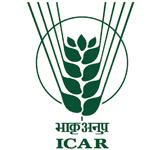
Vigyan Bhavan & Kempinski Ambience
10 - 14 February 2014
Delhi, India
blog

Leading women and men farmers in India received Krishi Karman awards from Shri Pranab Mukherjee, Honourable President of India, during the WCA2014 inauguration ceremony on 10 February 2014. Photo by Ram Singh/ICRAF
There’s more to gender than meets the eye, according to scientists at the World Congress on Agroforestry in New Delhi, India. It’s easy to miss the forest because you’re looking at the trees.
To test this, close your eyes and imagine you’re looking at a farmer. What do you see?
A white man in a round-collared white shirt and black jacket holding an upright pitchfork? A Caucasian man driving an air-conditioned harvester through a flat-to-the-horizon field of golden wheat? An African man hoeing the earth in a savannah beneath a prickly tree? An Asian man herding ducks through a muddy paddy field?
If any of the above came to mind, you’re right.
But you also left out at least 50% of the other farmers in the world: women.
Well, of course you knew that farmers were female, too. If you did imagine women farming the land, then you were 50% right, too.
But what researchers who work in agricultural research for development are arguing is that gender is more than the state of being male or female.
‘Gender’ is also more than just sexual differentiation of roles. The idea has gone beyond sexuality to implicitly include marginalisation from choice, that is, being left out when decisions are made. And even admitting that assumptions about who is marginalized when and where can be wrong, that relations between the sexes can be complex and vary from locality to locality.
For example, researchers in Mali found that sheep herding, which was typically considered the role of women (implying a simple situation with a low skill set), was much more complex than first appeared. Men and women had different perceptions about what was involved in the job and about who should do what. Women in different stages of life had different roles and authorities.
In Nepal, there was huge outward migration of men in search of higher paid jobs, mainly to the Gulf States. They left to fulfil their cultural obligation to provide for their families. Consequently, much agricultural land was abandoned and agriculture was being ‘feminized’. Women were left to till the land and grow food for subsistence or sale. They made all the decisions, and did all the work, themselves.
In Malawi, researchers found another complex situation around who made decisions to plant trees. In nearly all cases it was the ‘head of the family’. But in the north of the country that meant women and in the south it meant men. But in both north and south, a good percentage of households made decisions jointly. Those that did led to denser tree cover.
The point seems to be that the best decisions are made in consultation with everyone who has an interest in the matter being decided upon, be they men or women or some other interest group or whoever.
On that note, gender specialists might take a look at the Bugis people of Sulawesi in Indonesia. Their ancient religion recognizes five genders: 1) men who identify as men; 2) men who identify as women; 3) women who identify as women; 4) women who identify as men; and 5) the bugis, the priest, who identifies with them all.
By Robert Finlayson
—
Follow the Congress on Twitter #WCA2014 for live updates!






1 Trackback(s)